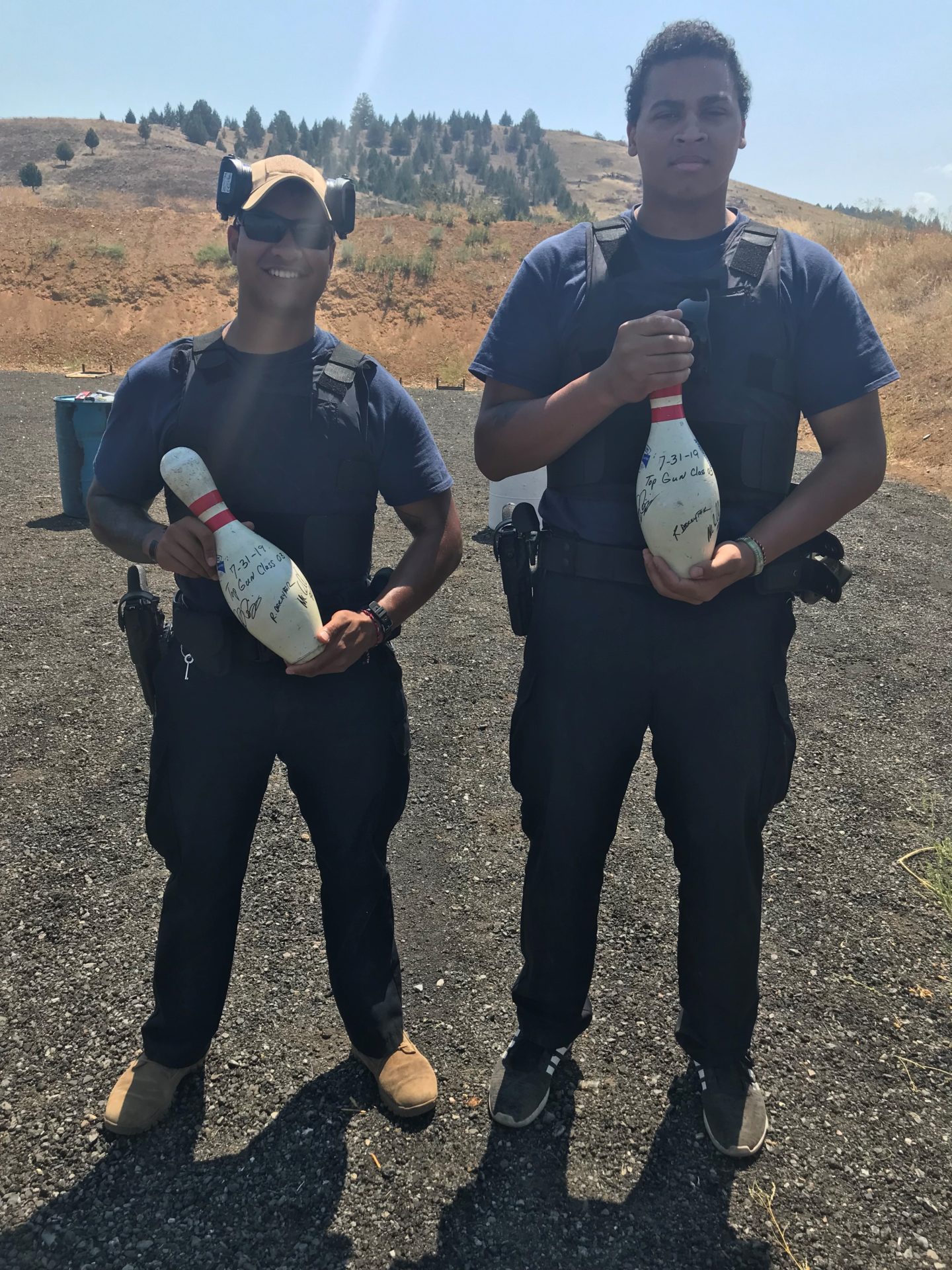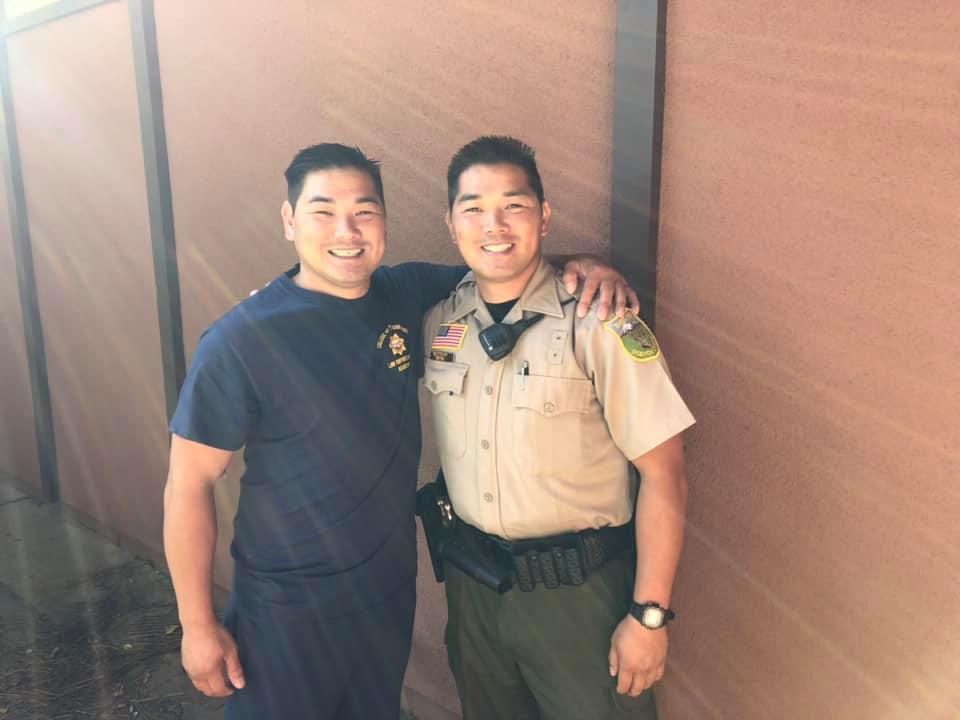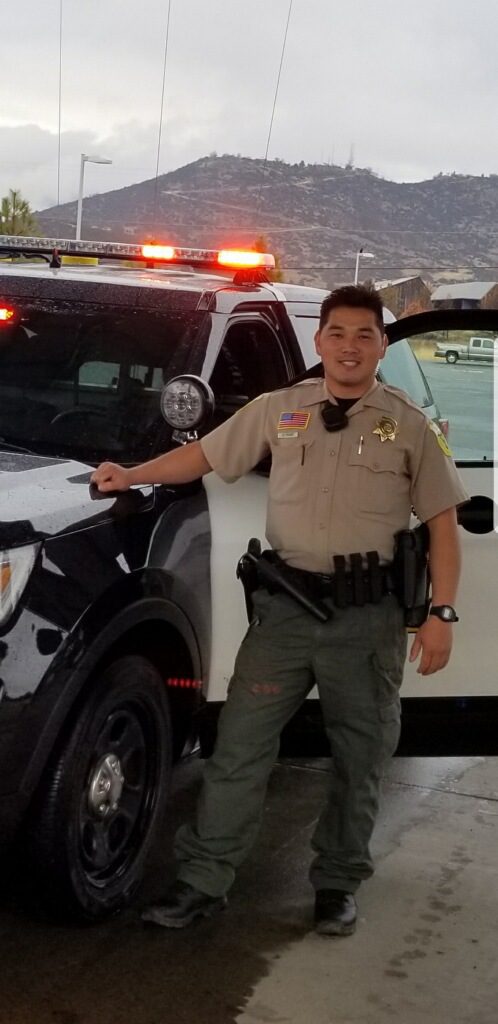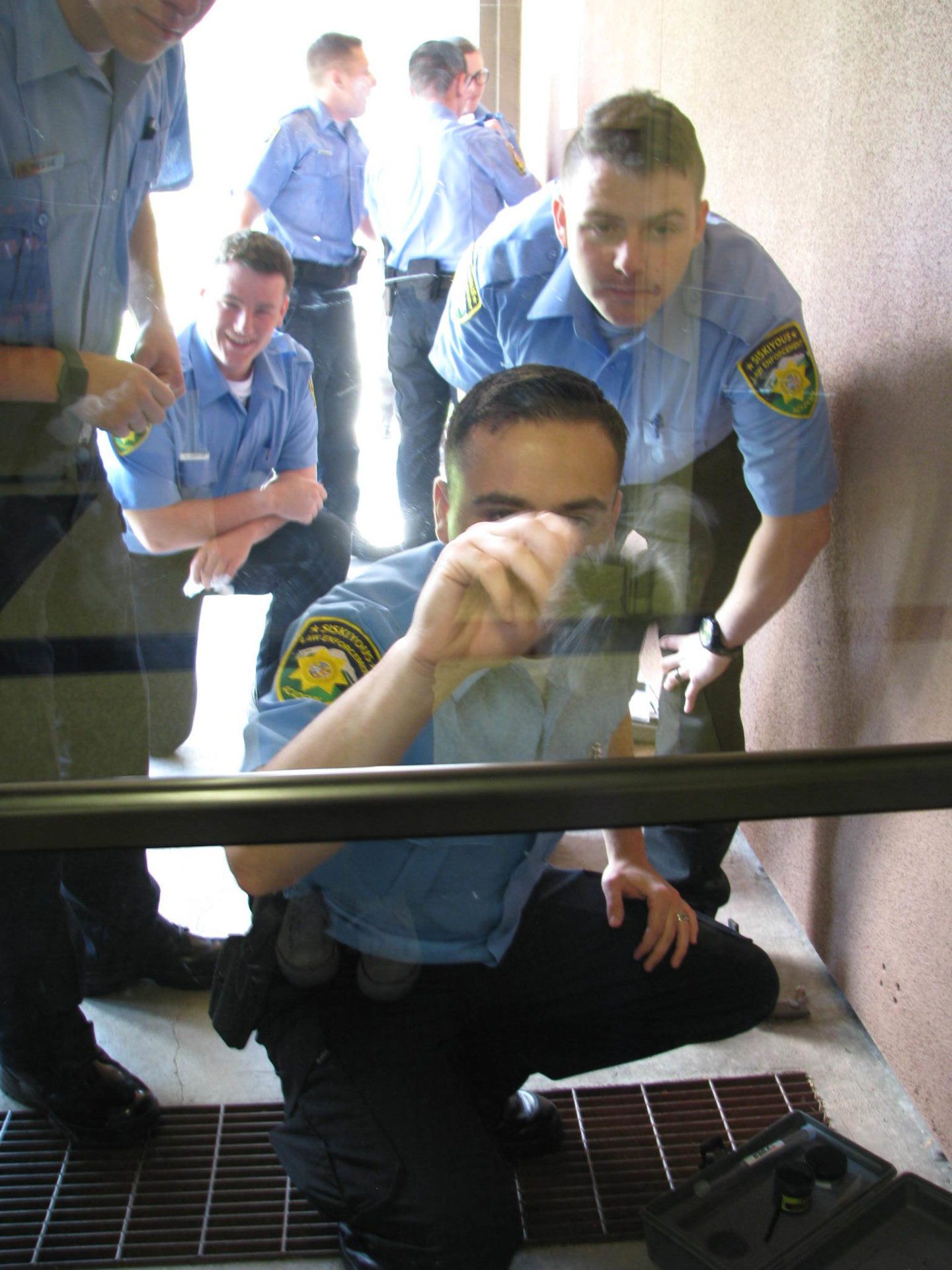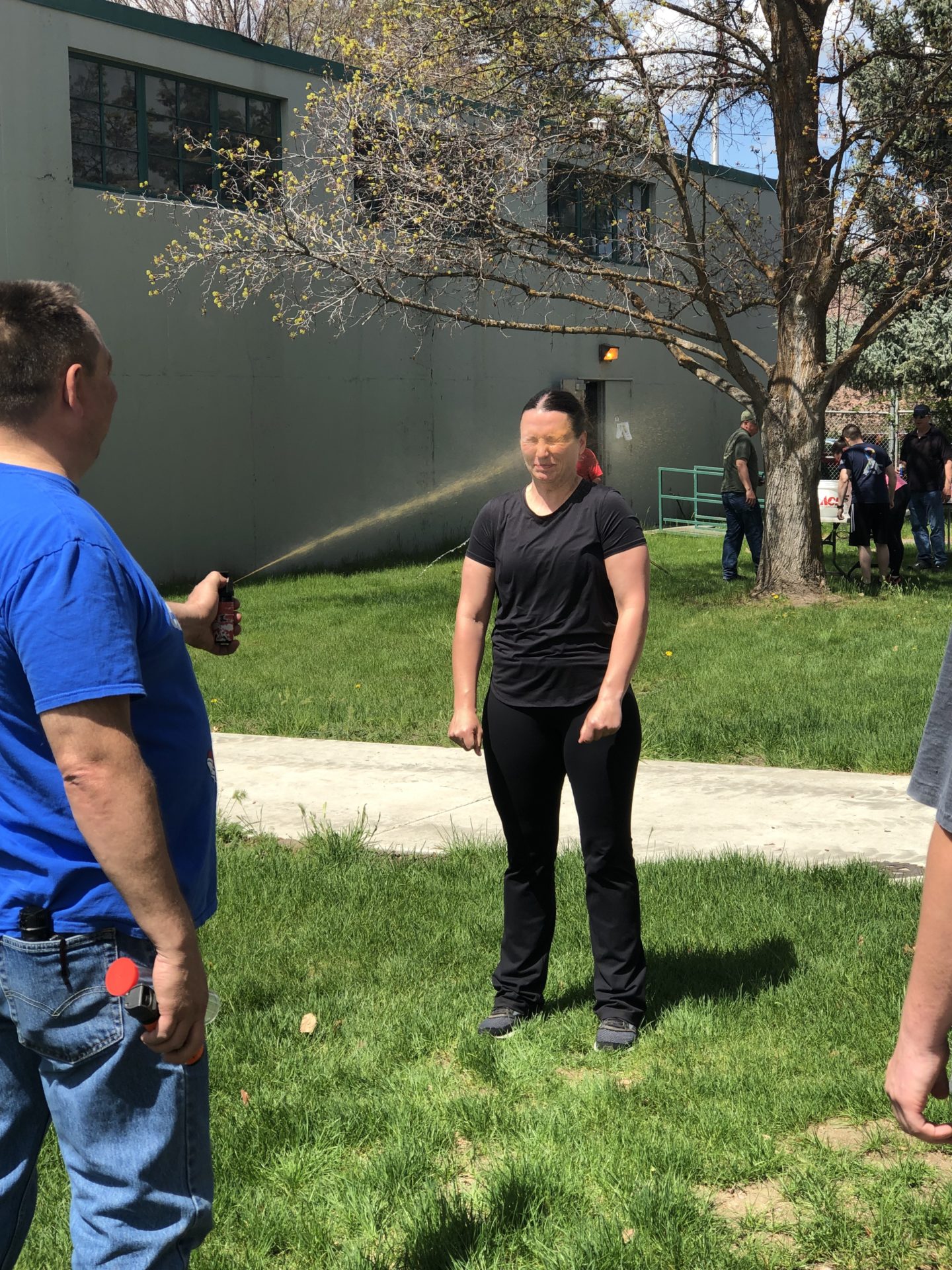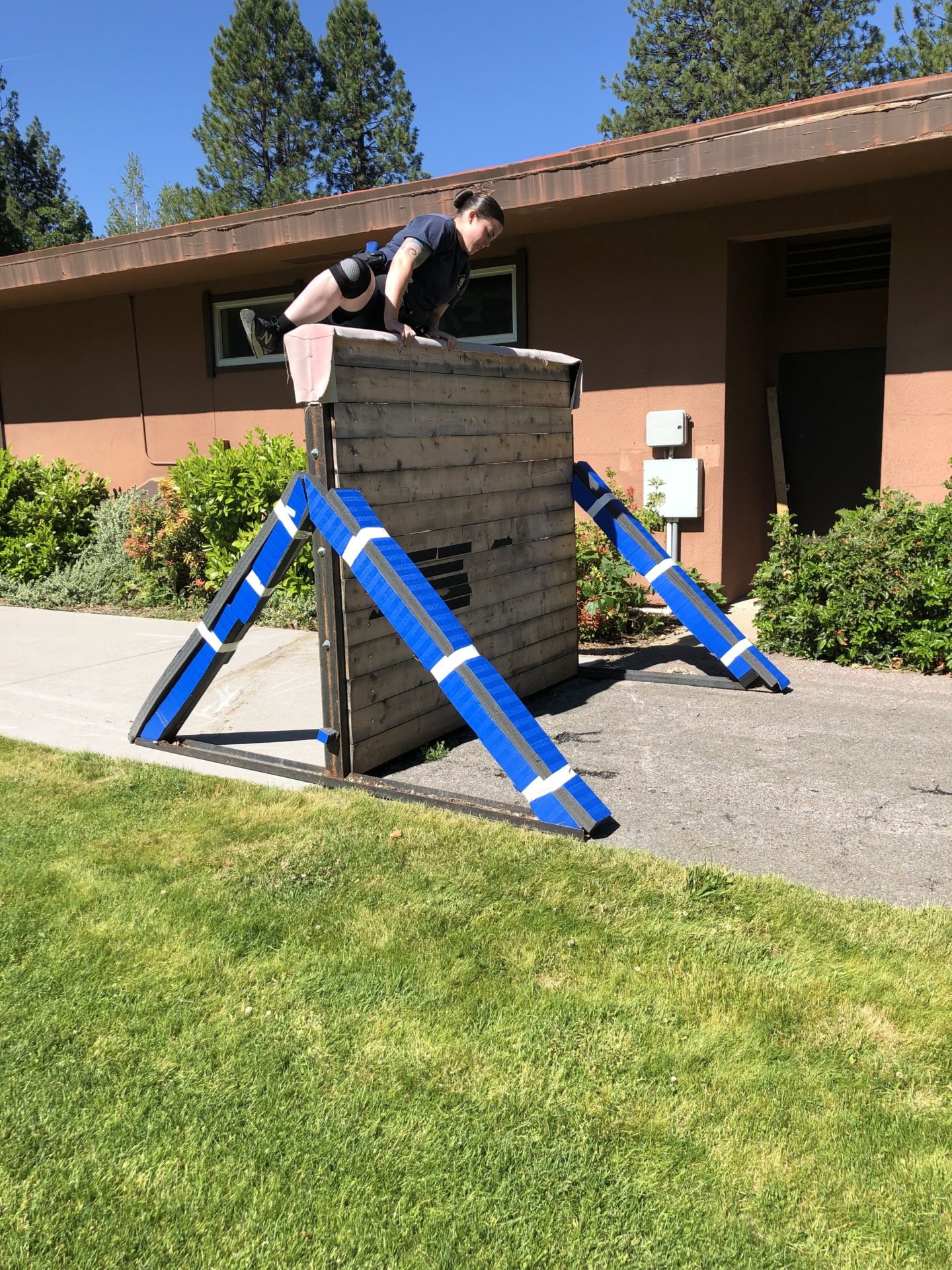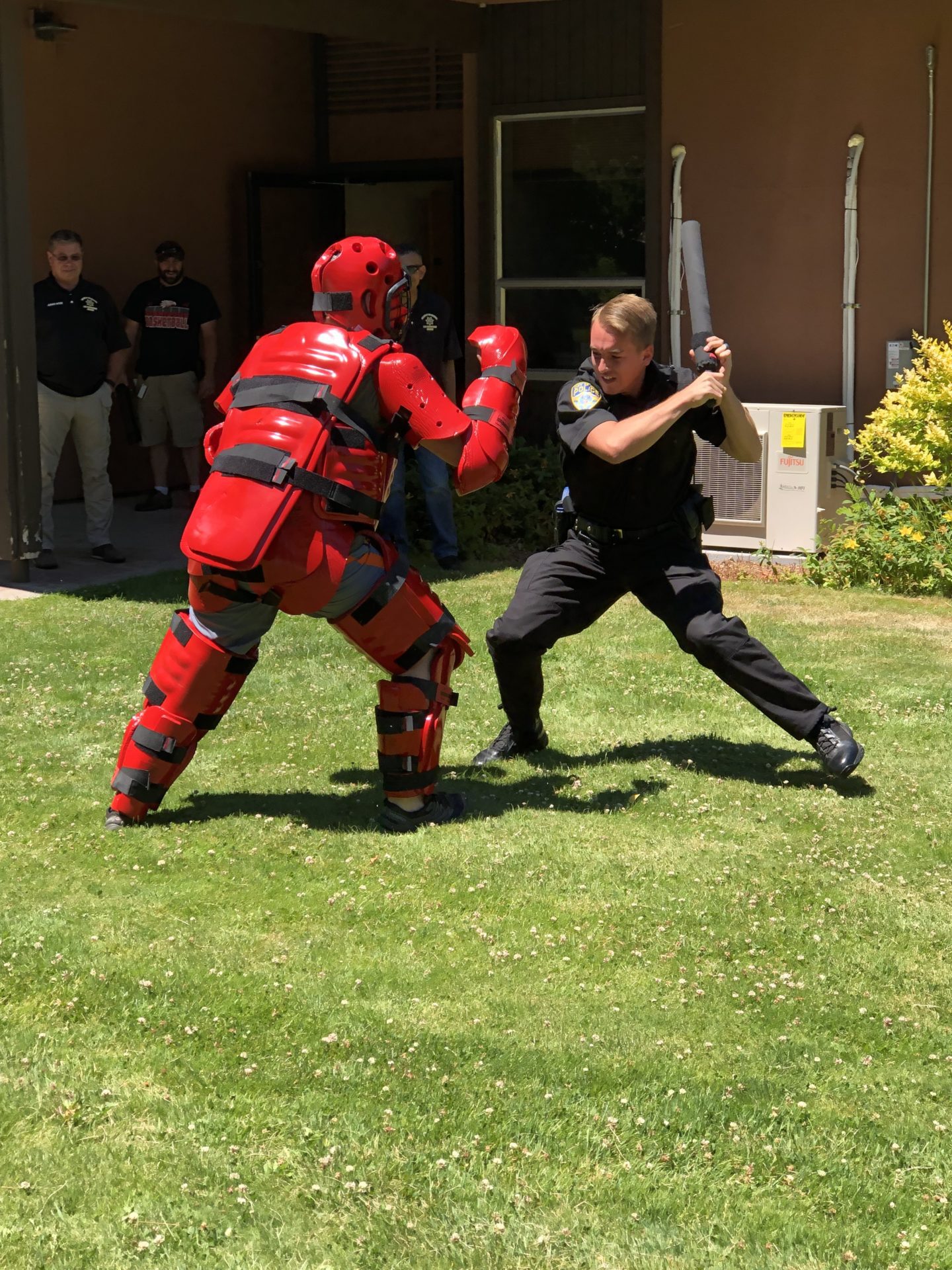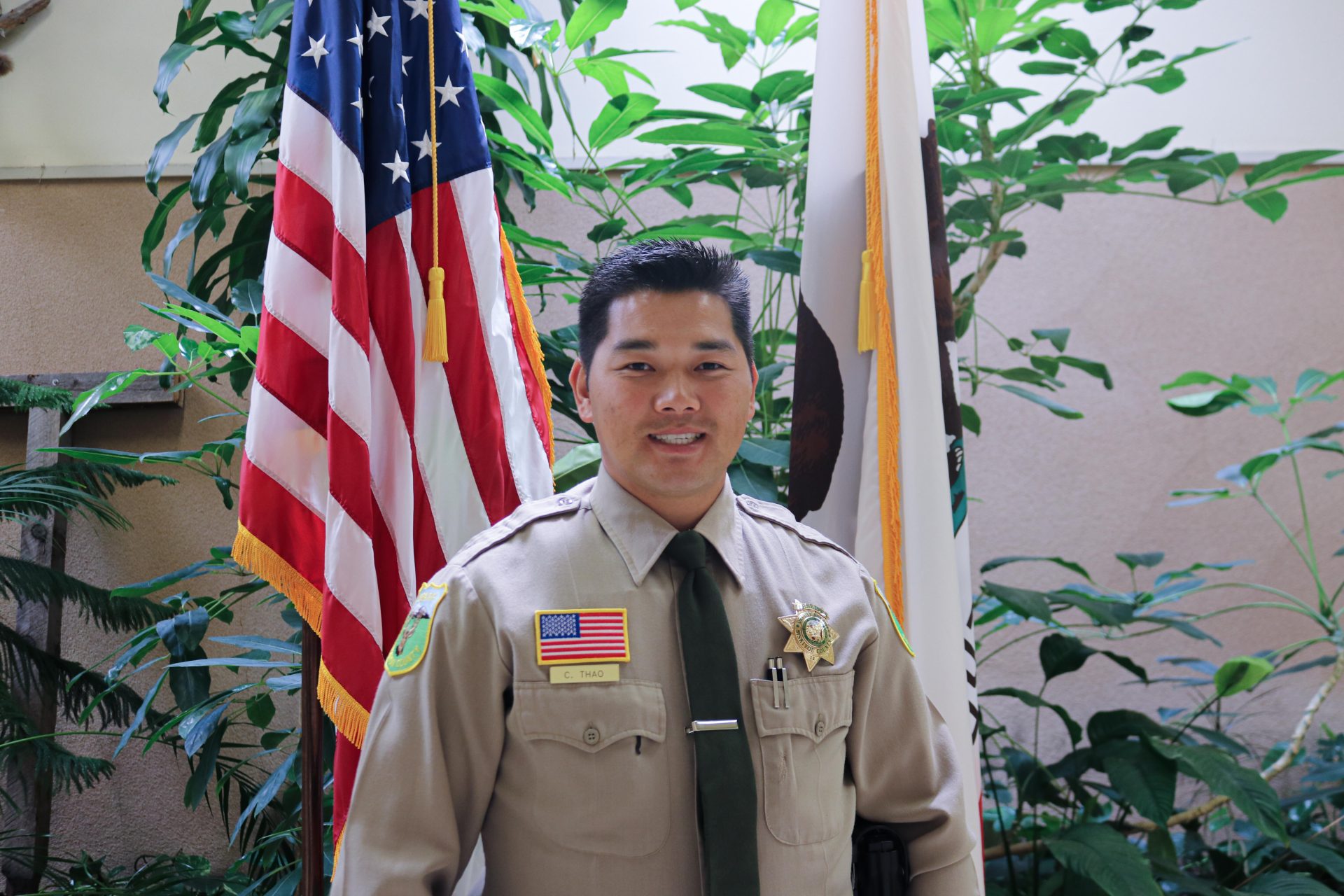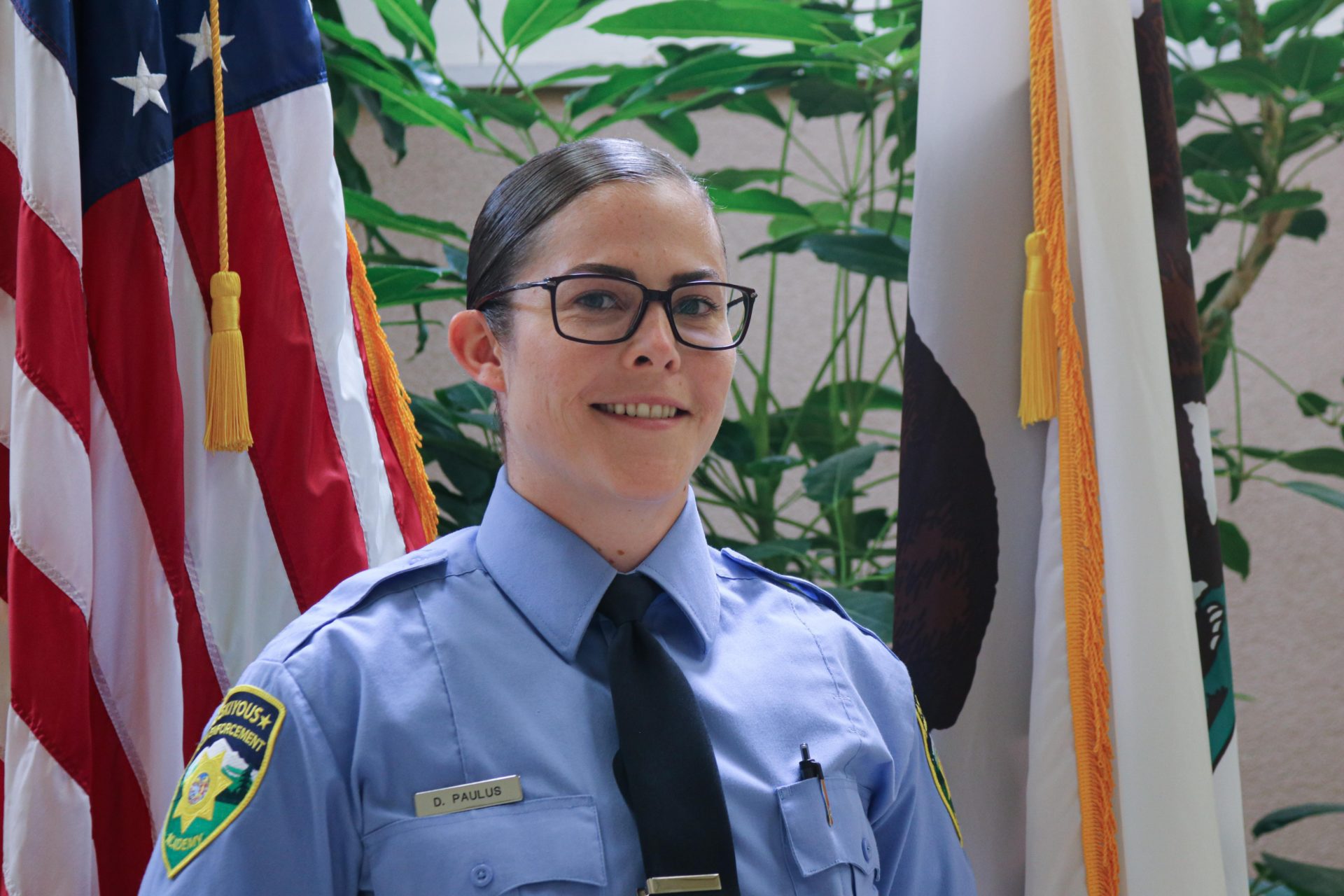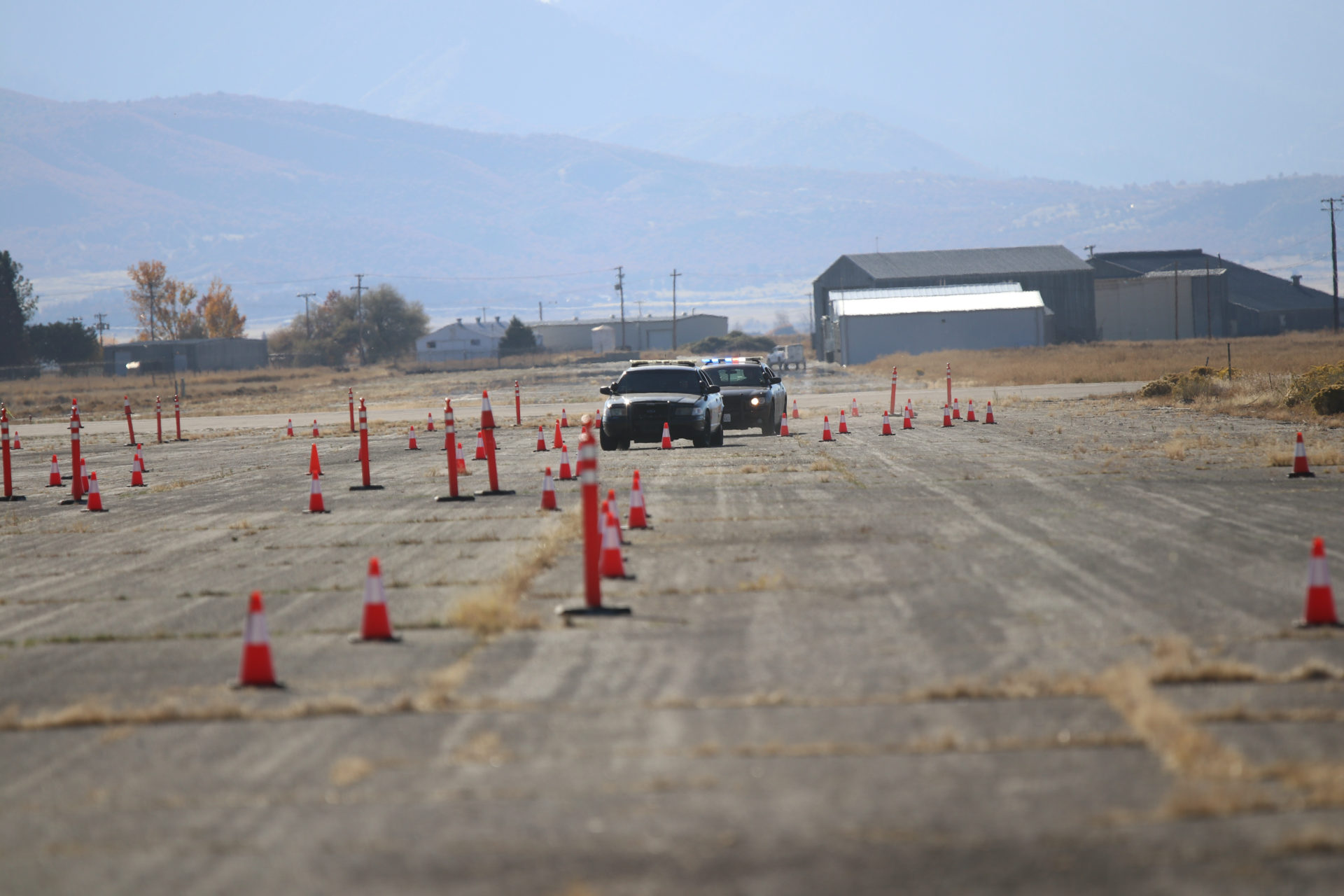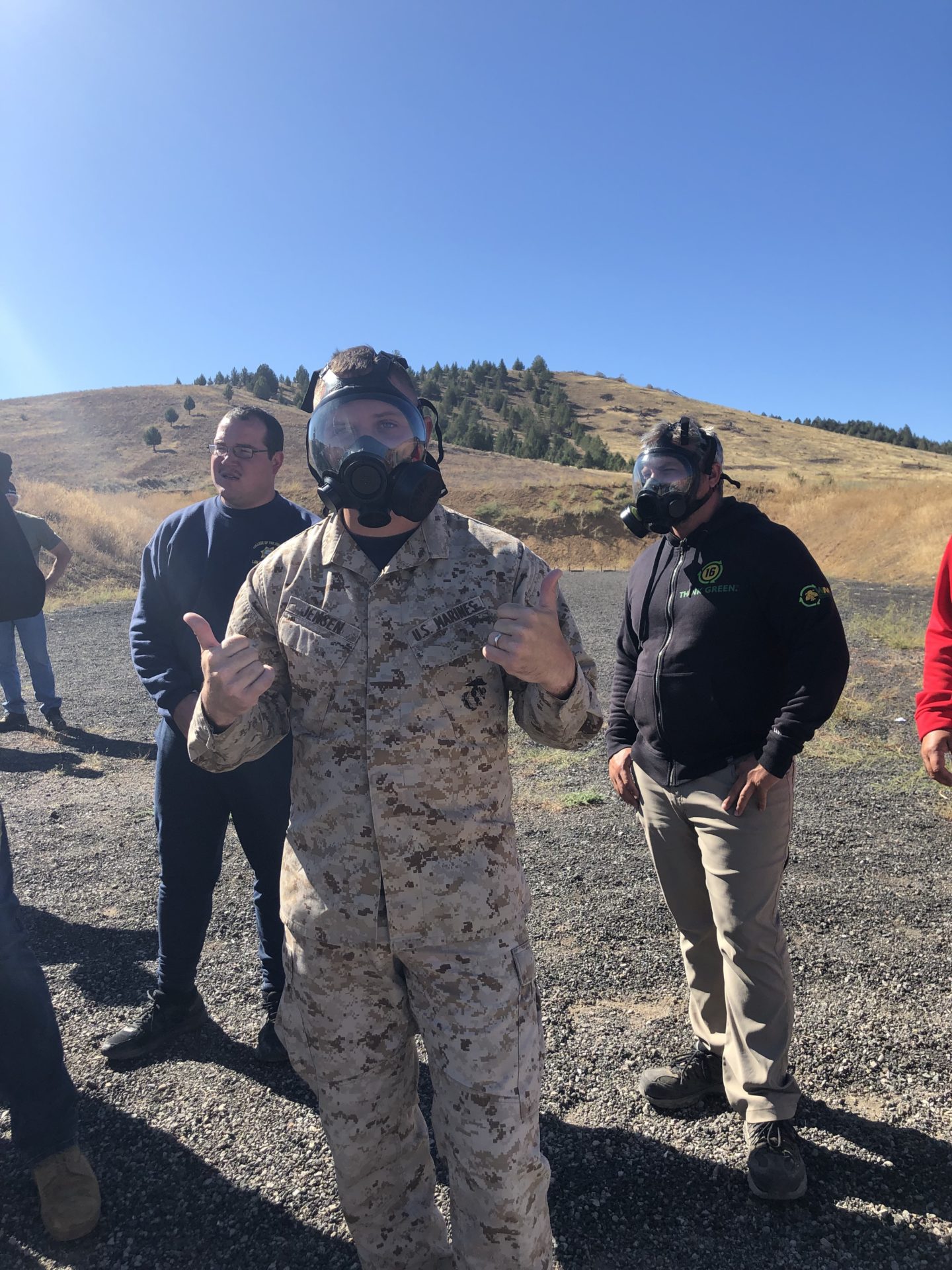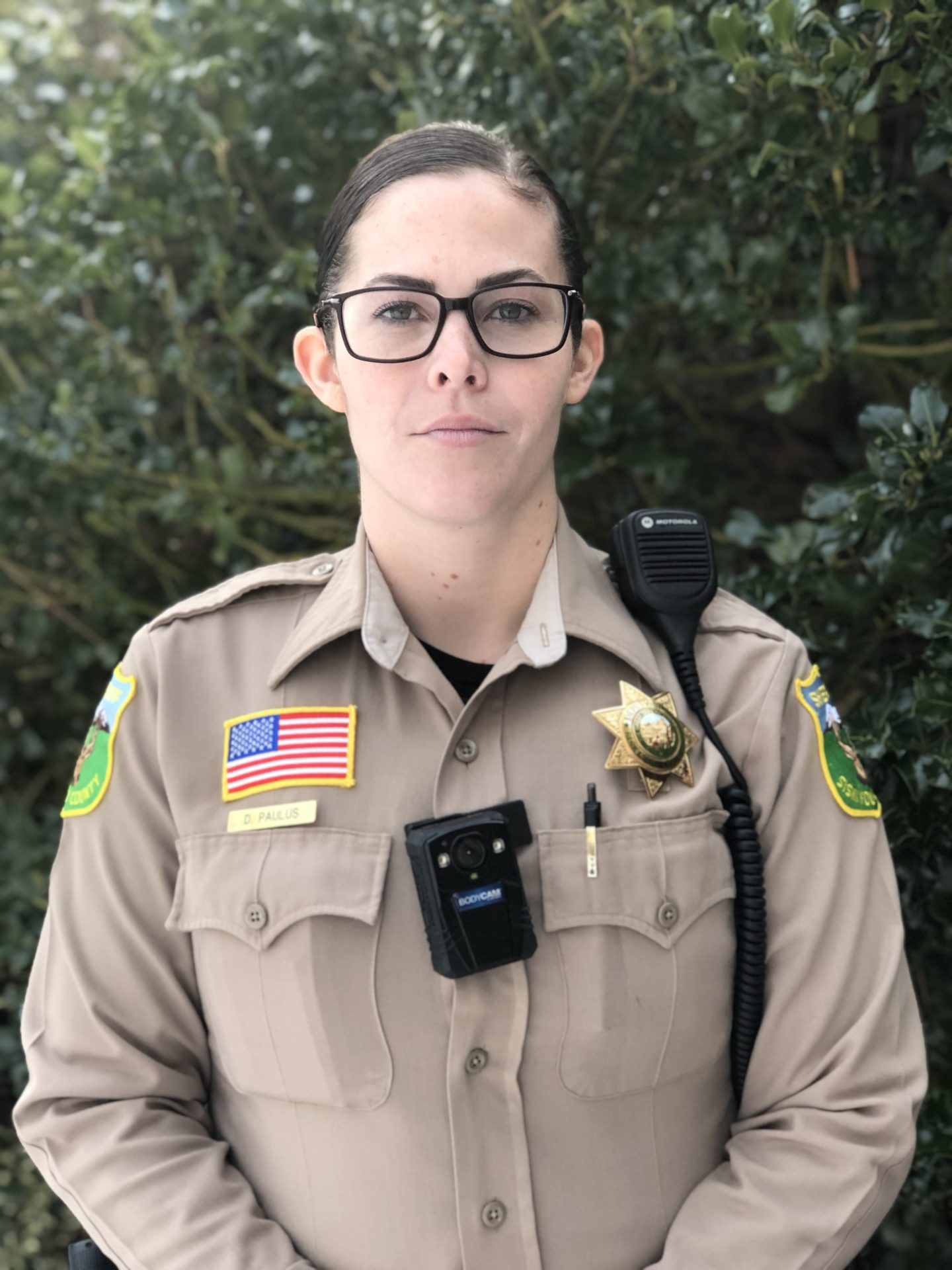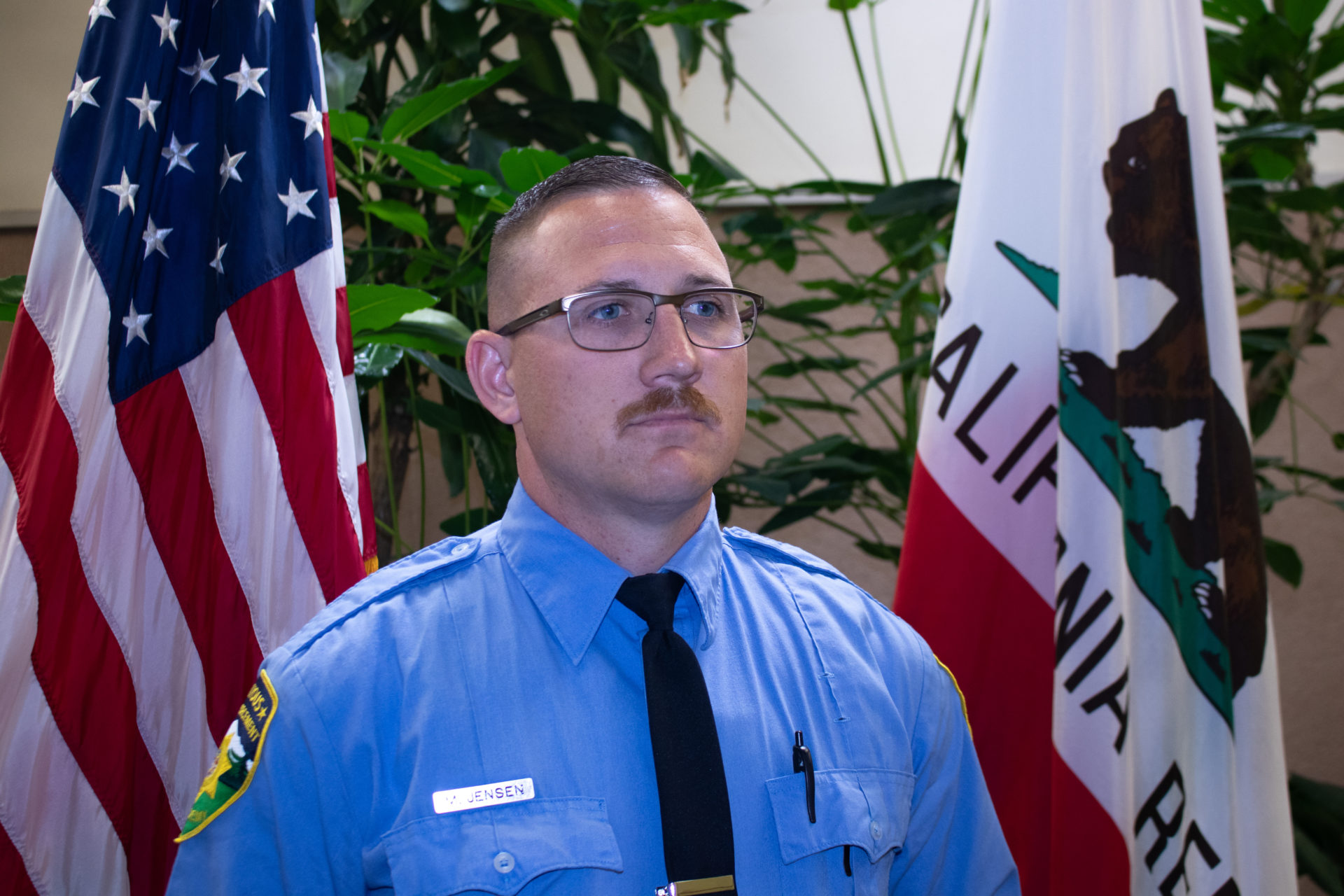Lucrative Law Enforcement Careers through COS POST Academy
NFNRC News Center – January 2020
Blue uniforms. Green wallets.
With demand for qualified law enforcement professionals climbing, it pays to be a police officer. And when it comes to earning a six-figure salary while serving a community, College of the Siskiyous’s POST Academy is a pretty good place to start.
“A student can show up here with no training,” says POST Law Enforcement Academy Director Lieutenant Jeremiah LaRue. “They can spend as little as just a couple thousand dollars … and they can get a job where you’re making a hundred thousand dollars a year with benefits.
“Talk about return on investment.”
For Veteran student Devin Paulus, POST (which stands for Peace Officer Standards and Training) was the “perfect fit.”
After five years of Navy service, Paulus was a ship lost at sea. She was looking for a way to translate her skills and discipline to a successful civilian life, and when she found the Law Enforcement Academy at COS, she knew she was home.
“I was stumbling a little bit,” admits Paulus. “In the military, I did security and anti-terrorism type stuff, so I was like, ‘you know what? Let’s go back to law enforcement.’”
More than a third of the cadets in the class were U.S. Military Veterans, which Paulus says made her feel welcome. It didn’t hurt that the class also included several women:
“Even though we were in the small county of Siskiyou, there were so many people that had different backgrounds,” she says.
College of the Siskiyous has been offering Law Enforcement classes since 1973. The program’s nearly 1,000 class hours encompass all of the fundamentals, from crime stops and arrests to firearm training. Through persistent exams and scenario practice sessions, Paulus felt amply prepared to enter the workforce.
“We did everything,” she remarks. “It’s definitely a lot of training, and I don’t think the general public realizes how much!”
Not long after graduating with an AS degree and Academy accreditation, Paulus landed a job. As Deputy Sheriff-Coroner in Siskiyou County, she spends her workdays handling patrol operations and calls for service. She has plans to earn her bachelor’s degree, and as a certified EMT, aspires to be a medic for a special reaction team.
As a guest advisor for the COS EMT class, Paulus is also serving her alma mater.
“I’m the only deputy officer that really comes into the class,” she says. “It’s nice for them to have that kind of mentorship.”
For Paulus, it’s an honor to give back to the College that launched her new career: “It’s nice to come full circle, going from being a student to helping them.”
It’s that supportive environment and commitment to community that keeps grads like Paulus connected to the school. At the Law Enforcement Academy, “It’s almost like a family,” according to LaRue. “We really take care of each other.”
The department supports students by connecting them to a multitude of career pathways available in law enforcement. The majority of graduates go on to careers as police officers, commanding an average of $104,790 in annual salary in California, according to the Bureau of Labor Statistics.
“We’re all about getting people to work,” says LaRue. “I want everybody to graduate in a department uniform and be hired.”
Regional employers are flocking to the Academy, with recruiters regularly contacting LaRue to fill local positions. And because POST Academy training is state wide, grads are also gravitating to other high-demand regions.
“There are thousands of jobs in the state,” says the director.
Departments from Lake County to Susanville have hired COS cadets either during the Academy or shortly after graduation. Every year, 20-plus departments travel to the College to recruit, some from as far away as San Francisco. Their message? That law enforcement isn’t just a job, but a rewarding career — in more ways than one.
“The San Jose Police Department came here, and they were like $130,000 starting,” says LaRue. “The cadets were blown away.”
Aside from the prime paychecks, what appeals to Law Enforcement Academy students and recruiters alike is the speed. In fact, the entire training can be completed in just six months.
About three years ago, the College focused its complete, three-module Law Enforcement program into an intensive format, giving students the full training they need, close to home.
“With the new format, we’ve doubled the class size,” notes LaRue. “It makes it more attractive to people because they can just get it done.”
Adding the final Law Enforcement module required significant upgrades. Equipment and supplies – everything from emergency vehicles to ballistic vests – needed to be purchased, while the firearms range and driving course also needed a revamp.
Funding from California’s Strong Workforce Program allowed the school to purchase essential equipment to loan to students, saving each cadet between $500 and $1,000. It also provided the means for COS to add two “smart” classrooms, complete with new computers and projectors.
“My whole thought was to be as cost-efficient as we can for students,” says LaRue.
“We couldn’t have done it without Strong Workforce.”
“The instructors are really there to help you succeed and find a job,” agrees graduate Cheegay Thao, the first Hmong deputy hired by the Siskiyou County Sheriff’s Department. His twin brother Cheenue followed in his footsteps, matriculating from the Law Enforcement Academy in December, and now working in Trinity County.
For Thao, it was the incredibly close-knit vibe and supportive environment that defined the College of the Siskiyous program. “You know that you will trust them,” he explains.
It’s even possible for cadets to go from classmates to colleagues. Not only was Paulus part of Thao’s class cohort, she now works in his department.
“I know that she will have my back, especially if I’m hurt because she’s a certified EMT,” Thao says about his fellow deputy. “So that’s why I always tell her: ‘If I get hurt, I need you around me.’”
Thao’s path to local heroism is especially compelling, given his unique origin story. Too dangerous to remain in Vietnam after his father fought on the United States side, the family immigrated to the U.S. in 1985. Thao was born six years later and grew up with a dream to make a difference as his father had. Seeing a chance to be a bilingual asset to his local community, he decided to become a police officer.
“Most of the Hmong people don’t speak clear English or don’t understand the law,” says Thao.
That’s a problem, because about 3,000 residents in the small county speak primarily Hmong. And though the department employs translators, Thao explains that having bilingual patrol officers on the scene is more helpful.
“If another Hmong who is a law enforcement officer approaches them and speaks the same language, they feel more comfortable,” says Thao. “They are willing to talk to you and tell you what’s going on in their own language.”
“In law enforcement, we need a broad spectrum of people,” agrees LaRue. “Both [Thao and Devin] aspired to work and serve in the community they call home … and they both hope to give back to a community that has given them so much.”
